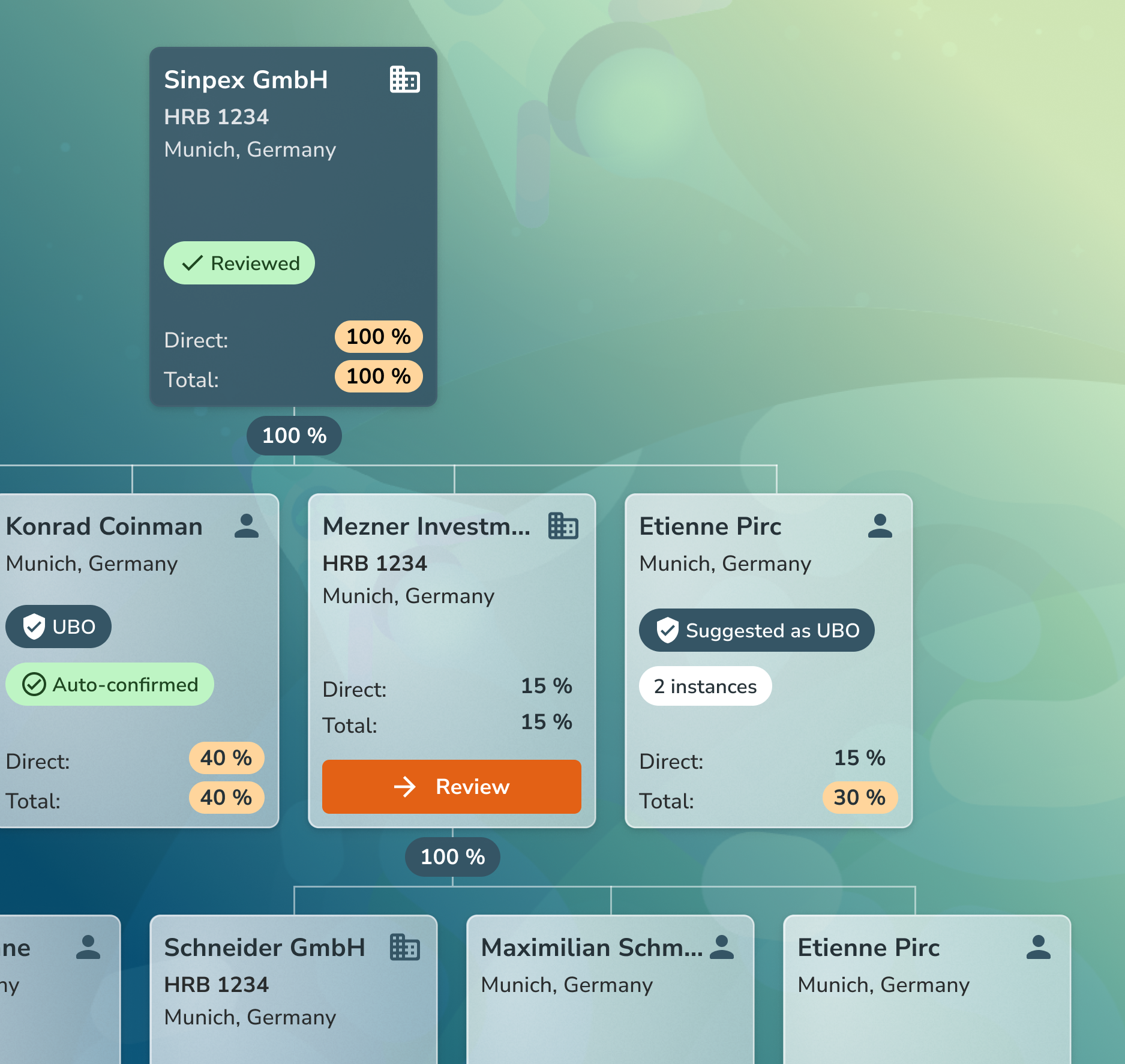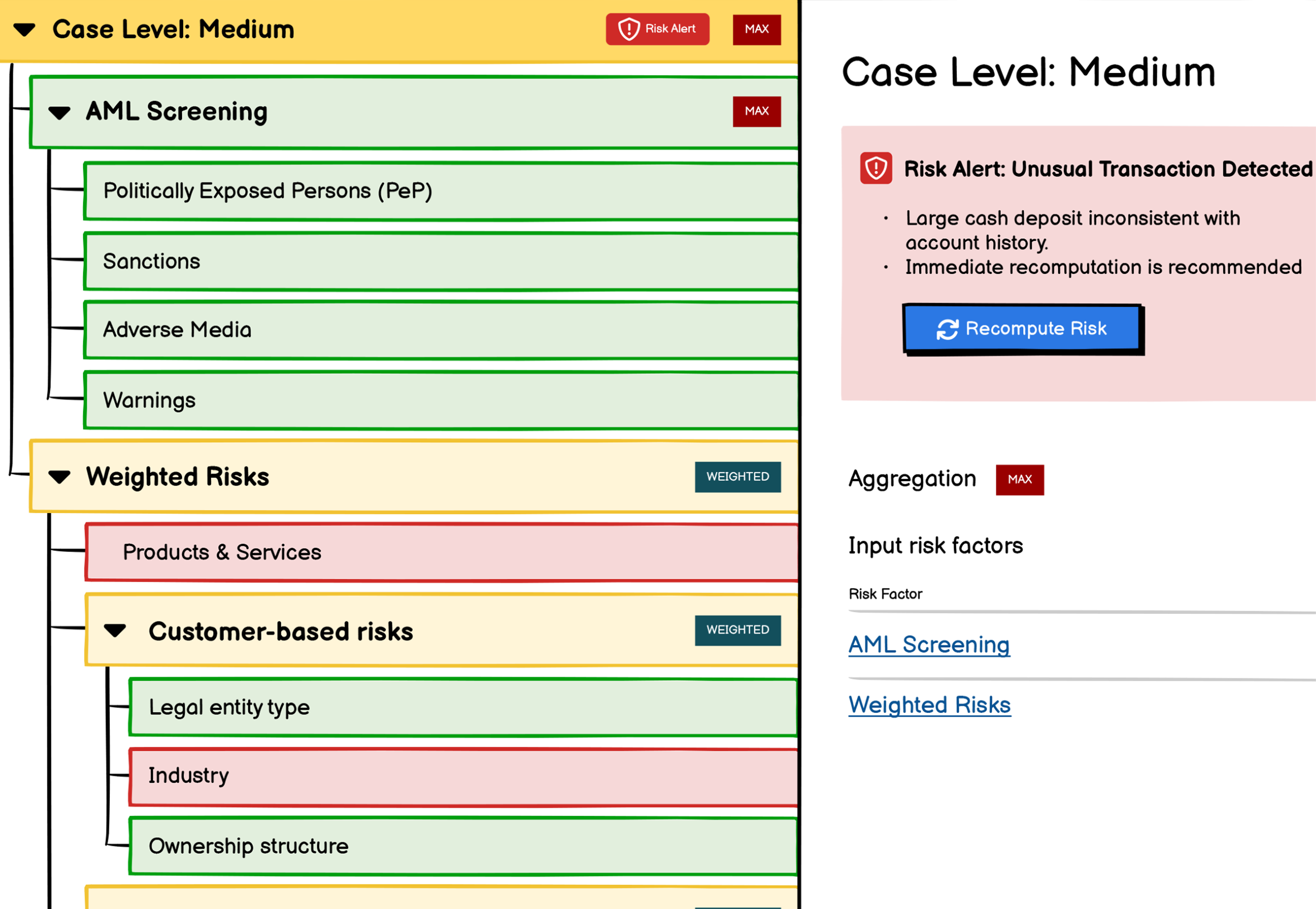Sinpex GmbH
At Sinpex GmbH , an AI KYC compliance firm, I designed the platform’s UX/UI, creating intuitive workflows that streamline complex regulatory tasks.
Client data and certain screens redacted per NDA; full context available privately.
Ownership Puzzle
Beneficial ownership, made clear.
Built a crisp drill-down flow so analysts can trace owners and validate disclosures fast, with visual anchors (percentages, entity icons, risk markers) for trust at a glance.
Goal: Make “who owns what” obvious.
Users: Analysts tracing beneficial ownership.
Approach: Case-type wireframes & solid hierarchy.
UI: Clean visuals with percentages, entity icons, risk markers.
Rules of Risk
AML scoring, untangled and auditable.
Built a stepwise flow that mirrors analyst workflows with grouped factors, adjustable weights & drilldowns.
Goal: Make AML scoring traceable.
Flow: Inputs → categories/weights → case risk (wireframes first).
Workflow fit: Grouped factors, adjustable weights, drilldowns.
Auditability: Thresholds, nested groups, aggregation controls.





